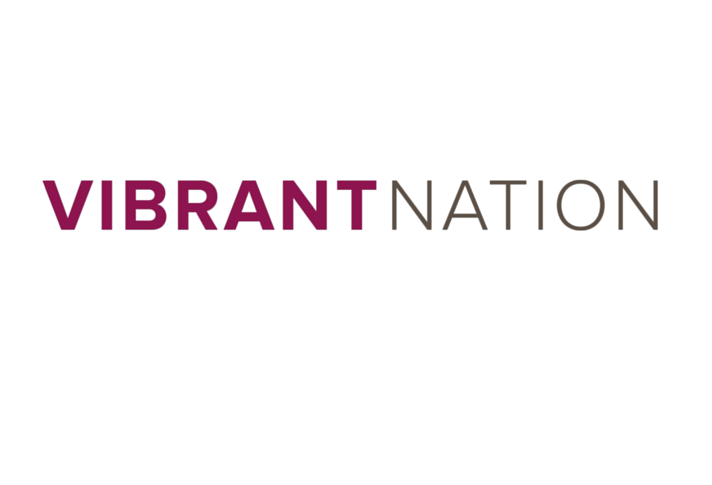Meet LinYee Yuan, MOLD; Kavita Shukla, Fenugreen; Kyleigh Wawak and Eleanor Sandford, gravitytank; Brad Crepeau, Food Cycle Science
We think about food several times a day, but may not think about food design when we rush for our morning coffee or dig into our dinner. Design is more than a beautiful food arrangement prepared by a restaurant chef. Design and food connect in much broader ways, and since many housewares products enable and enhance the preparation and serving of food, the future of food is of critical importance.
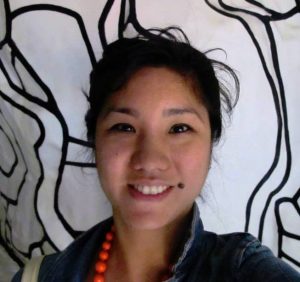 Today we are speaking with panel moderator LinYee Yuan, founder and editor of the food design website, MOLD. While reporting on industrial design as managing editor at www.core77.com, she noticed an influx of design projects focused on rethinking food systems, preparation, storage and experiences. Inspired by the creative problem-solving from designers working in the food space, she founded MOLD as a platform to showcase food design with the belief that designers are uniquely positioned to develop products that will help feed a hungry planet.
Today we are speaking with panel moderator LinYee Yuan, founder and editor of the food design website, MOLD. While reporting on industrial design as managing editor at www.core77.com, she noticed an influx of design projects focused on rethinking food systems, preparation, storage and experiences. Inspired by the creative problem-solving from designers working in the food space, she founded MOLD as a platform to showcase food design with the belief that designers are uniquely positioned to develop products that will help feed a hungry planet.
 Kavita Shukla, founder and CEO of Fenugreen, a social enterprise taking on the massive global challenge of food waste with a simple innovation, the food preserving FreshPaper. She invented FreshPaper while in middle school. Her story of simple beginnings, belief and empowerment has inspired millions worldwide. FreshPaper is now sold at Whole Foods and by other retailers. https://www.youtube.com/watch?v=CGl3kZQMr3U&feature=youtu.be.
Kavita Shukla, founder and CEO of Fenugreen, a social enterprise taking on the massive global challenge of food waste with a simple innovation, the food preserving FreshPaper. She invented FreshPaper while in middle school. Her story of simple beginnings, belief and empowerment has inspired millions worldwide. FreshPaper is now sold at Whole Foods and by other retailers. https://www.youtube.com/watch?v=CGl3kZQMr3U&feature=youtu.be.
Kavita holds four patents and has received international awards as an inventor, designer and entrepreneur, including the INDEX: Design to Improve Life Award. Her work has been featured by CNN, the New York Times and in other media. She was also recently featured as one of the “7 Entrepreneurs Changing the World” by Fast Company and on the Forbes “30 under 30” list. She holds a B.A. from Harvard University.
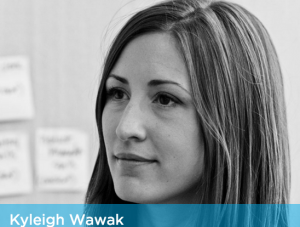 Kyleigh Wawak, a classically trained chef who has worked for fine hotels, also has a degree from Miami University’s Farmer School of Business and has experience as a project manager. As a member of the design team at Chicago-based innovation consultancy gravitytank, she is in an integral part of food innovation projects, from the initial trend and consumer research to developing food prototypes.
Kyleigh Wawak, a classically trained chef who has worked for fine hotels, also has a degree from Miami University’s Farmer School of Business and has experience as a project manager. As a member of the design team at Chicago-based innovation consultancy gravitytank, she is in an integral part of food innovation projects, from the initial trend and consumer research to developing food prototypes.
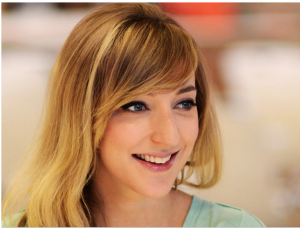 Eleanor Sandford leads the product design group at gravitytank. She manages close interaction with consumers and develops new approaches to problem solving to deliver high-quality results to clients in varied market areas. From grocery retail innovation to food packaging, her work has helped to contribute to gravitytank’s food innovation program.
Eleanor Sandford leads the product design group at gravitytank. She manages close interaction with consumers and develops new approaches to problem solving to deliver high-quality results to clients in varied market areas. From grocery retail innovation to food packaging, her work has helped to contribute to gravitytank’s food innovation program.
Brad Crepeau, CEO of Ontario, Canada- based Food Cycle Science, which markets the Food Cycler, a countertop composting appliance.
What is the most exciting or rewarding part of your work? What fuels your inspiration?
LinYee: Everyone has a personal relationship with food. I believe that we should be critical consumers demanding safe, nutritious and sustainably produced food for everyone. I also believe the act of eating itself can be provocative. Designers have a critical role to play in charting the future of how and what we’ll eat and it’s exciting to be part of that conversation.
Kyleigh: Getting to learn a lot about an industry or category. All the fun things that come with this—like touring an ice cream factory, visiting candy stores and tasting beers. What fuels our inspiration is just this – getting out in the world and seeing and experiencing what is happening in the world with food. Not just new trends (like mashups and salty sweet) but cool ways of ordering. The most rewarding part of our work is helping a company do something different. Solve a problem. Giving them the tools they need to innovate. It is also rewarding to see the end result. From a half sheet to a concept that has come to life.
Eleanor: I get really excited when we relay what we hear from real consumers and translate that into a tangible solution, because that’s the point you can really shift how you think about a product. I’d say my inspiration is fueled by good coffee… and working at a firm where I’m lucky to experiment and constantly get my hands dirty.
Brad: The idea that our technology is changing the way people think about a process that has been done the same way for hundreds of years. To be a trailblazer in even the smallest sense of the word is inspiring to me. And if in doing all that we’re able to have a positive impact on the environment and future generations… well that alone makes it worth getting up in the morning.
In the past few years, what has changed most in your business? How has your company met these challenges in the way you do your work?
 Kyleigh: Five years ago we had BIG projects, like identifying an opportunity all the way through to delivering high fidelity concepts with business modeling and go-to-market strategy. Today things are a bit more piecemeal. Projects are smaller in scope and scale and we have met these challenges by thinking of different ways of working in smaller teams and taking on different roles and responsibilities.
Kyleigh: Five years ago we had BIG projects, like identifying an opportunity all the way through to delivering high fidelity concepts with business modeling and go-to-market strategy. Today things are a bit more piecemeal. Projects are smaller in scope and scale and we have met these challenges by thinking of different ways of working in smaller teams and taking on different roles and responsibilities.
Brad: Moving from a B2B business to both B2B and B2C has had some interesting challenges. As a startup, introducing a new technology to the market can prove to be both costly and difficult. I think taking on a creative, out-of-the-box approach to introducing this product has been an effective way to break down some of the barriers that have presented themselves. Being resourceful and listening to customer feedback has been vital to the progress of our company.
Why did you choose to speak at the International Home + Housewares Show?
LinYee: This Show is an incredible platform that touches so many parts of the industry and the brands, designers, retailers and press attendees have the power to shape consumer habits of the future.
Kyleigh: Food design goes beyond the product. It’s about looking at a problem from a holistic viewpoint and designing to address pain points and needs of consumers.
Eleanor: I think that product design is so key to the future of food – as it is a crucial piece in how we make, prepare, purchase and experience food, and the work we’ve done in this space makes for engaging conversations on how we think about food and the systems that surround it.
Brad: There are almost always parallels that you can find between companies sharing a similar space. It is rare to not be able to relate with other challenges or obstacles that other companies or individuals have overcome.
Designing the Future of Food
Innovation Theater, Lakeside Center, Room E350
March 5, Saturday 2:30 – 3:20 pm
Tell us what you will be speaking about and how this important for Show audiences.
LinYee: The way we’ll eat in 20 years will be radically different from how we eat today. As consumer demand grows for “smart products” to help us change old habits and form new ones, designers have a unique opportunity to create kitchen appliances, food products, systems and services that will help consumers make healthy, responsible choices in their daily eating and cooking habits.
The speakers will be presenting innovative approaches to defining the future of food through design. Whether it’s drawing on ancient ingredients to resolve contemporary food waste challenges or looking at the fields of health and technology to change eating habits for the better, we will be sharing strategies for building the products and eating habits of the future.
Kyleigh: The food world is changing rapidly, especially with the roles of technology and health. We will address the ways tech, health and other factors influence design and food for the future.
Brad: I’m eager to share some of the challenges that we encountered when trying to introduce a new, never-heard-of-before kitchen appliance to the North American countertop. Trying to convince homeowners to part with counter space at a $350+ price point can be challenging, so we had to make sure the market really understood exactly why this was a smart investment.
What do you see as consumers’ biggest concerns regarding housewares products?
LinYee: Consumers want to live more sustainably without sacrificing their quality of life. They also want to live efficiently and get more from the objects in their lives—that means objects need to save time, go beyond single use and offer solutions to reducing waste. As we shift to more dense urban living environments, we’ll need our housewares to not only perform as promised, but to do so elegantly.
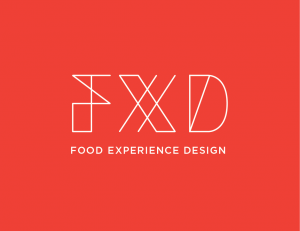 Kyleigh: There are so many! Products that only do one thing, waste space on the counter and become obsolete. With so many options out there for people to choose from when it comes to eating (healthy fast casual, meal delivery service and more) products must do something in a meaningful way to be needed.
Kyleigh: There are so many! Products that only do one thing, waste space on the counter and become obsolete. With so many options out there for people to choose from when it comes to eating (healthy fast casual, meal delivery service and more) products must do something in a meaningful way to be needed.
Eleanor: I think that the sustainability and longevity is something we’ve seen as an issue, and II think many brands are listening and implementing more environmentally sound and thoughtful ways of approaching a product’s lifecycle.
Brad: I think life cycle and price. When making an investment in a household appliance consumers want to know that their investment is going to last. Quality of design and functionality are two key components to ensuring consumers enjoy using the product.
What are some of today’s trends or concerns that new product development professionals and/or retailers face in the housewares market?
LinYee: Kitchens have always been the heart of the home but they now function as flexible spaces for working, hosting and even farming (small scale microgreens and herbs…for now). There is also a real demand for tech-enabled kitchen appliances, but product development has a long lead. Ideas pitched today may feel stale or outdated by the time they reach the market. The challenge lies in addressing the demands of consumers while building flexible products that will continually adapt to needs. It would be revolutionary to see a return to products that are cherished and used throughout a consumer’s lifetime and it’s exciting to recognize that the technology is available to enable this more sustainable approach to product development today.
Kyleigh:
- Products for cooking at home compete with meal delivery services, grocery stores with delicious prepared food options, and healthy fast casuals. It’s becoming so easy to eat out and get good inexpensive food, appliances may become less necessary in the home.
- Green is good. People are conscious about their footprint on the environment.
- Smaller spaces. People are living in urban areas. How do we make something useful and useable that does not take up a lot of space?
Brad: Brand worthiness. Consumers, especially Millennials, are extremely informed when making buying decisions. With an abundance of information available at the click of a button, a product is only as reputable as its brand. Moreover, if you’re a new company, with little brand recognition, it can be challenging to establish the type of reputation required to really penetrate the mass market. Ensuring that the early adopters of your product are extremely satisfied and repeat buyers is key to a successful product launch.
Thank you, LinYee, Kyleigh, Eleanor, Brad and Kavita, for sharing your thoughts about how design’s importance will grow in relation to many aspects of future food. We’ll be hungry for your tantalizing conversation on Saturday, March 6 at 2:30 pm in the Innovation Theater, Lakeside Center, room e350.
To learn more about the speakers, visit:
LinYee Yuan
www.thisismold.com
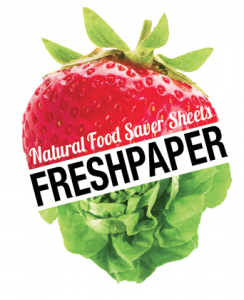 Kavita Shukla
Kavita Shukla
FreshPaper
www.fenugreen.com
